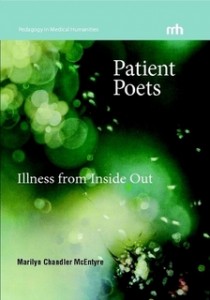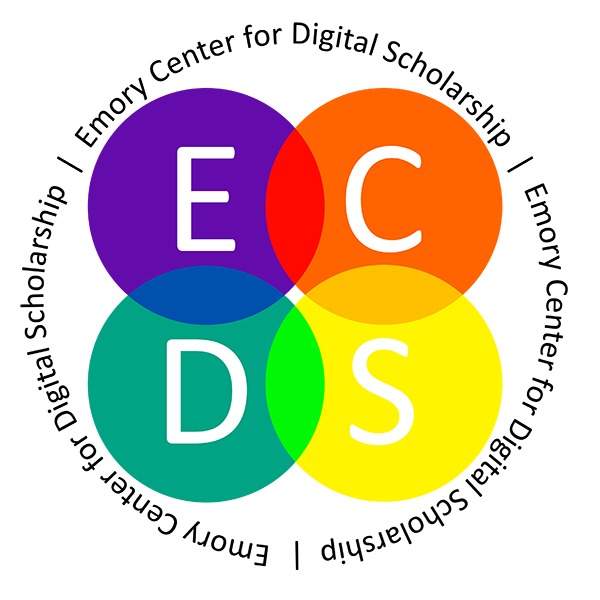Reflections on Writing | Patient Poets: Illness from Inside Out
By Marilyn McEntyre, Ph.D.

Patient Poets: Illness from Inside Out is available for purchase or free download through the UCSF School of Medicine Medical Humanities Book Series.
It has been said that every book is an answer to a question. Mine was. Patient Poets originated in a question that fueled a lasting interest in poetry written by people with chronic or terminal illness or disability: what enables or even compels people to call upon waning energies, use precious and limited time, and defy physical pain in order to write a poem?
A lot of people do it. Websites by people with conditions as various as chronic fatigue syndrome, arthritis, diabetes, cystic fibrosis and cancer often feature poems. Poets whose careers began in good health produce whole volumes of new work after diagnoses that change the course of their life and writing. Karen Fiser’s two collections, for example, Words Like Fate and Pain1 and Losing and Finding2, though they include many poems that are not specifically about the body, offer a rich series of perspectives on the long transition from diagnosis through surgeries to her journey with chronic pain and increasing disability. Chana Bloch’s work, prolific before illness, took a new direction after her own cancer, her husband’s mental illness, and a second, serious bout with cancer. “The greatest difficulties are often the things that generate the strongest poetry,” she observed in an interview. “When you write about the turmoil inside you, as you begin to shape the material, the poem begins to shape you.”3
That idea, that the work of poetry is somehow reciprocal—that it shapes (and, some say, helps heal) the poet as the poet gives shape to the poem—informed my curiosity about intersections between poetry and pain, and led me to begin reading poems by those I came to call “patient poets.” The poets included in the book cover a wide range. Some are widely known—Jane Kenyon, Lucille Clifton, and Anne Sexton, for instance. Others are poets who have participated in hospital-based writing groups, who have written their way through private suffering and shared poems with friends, who have surprised themselves with poems that emerged unbidden out of the depths.
As I read these works of poetry born out of illness, the motive for writing about these remarkable writers became clearer. It was to invite caregivers (which we’re all likely to be in some capacity at some time) to reflect on what we can learn from poetry by patients that we can’t learn any other way. I assume, and strongly believe, that poetry provides a kind of information that can’t be delivered any other way. As I tell students, a poem doesn’t deserve to be a poem unless it has to be a poem.
Consider, for example, the way line breaks work in most contemporary poetry. The line break often comes mid-sentence, setting up a tension between the idea articulated by the sentence and the feeling or association or wisp of thought evoked by a phrase that has not yet taken its place in the sentence structure. So, momentarily, the line break suggests possible meanings that continue like after-images even when the sentence has fixed the phrase or word in place. Alice Jones’ “The Biopsy,”4 for instance, opens with these lines:
The dapper surgeon enters, greets me
Loudly, hangs his coat on a steel hook
Next to my slip, as in a cozy household.
The second and third lines open with a slight shock: what might have been imagined as a friendly professional greeting changes with “loudly” into a jarring, inappropriate, even antagonistic, opening to an encounter that is likely to be uncomfortable. Similarly, the neutral act of hanging a coat on a hook acquires unsettling, suggestive overtones with the added phrase “next to my slip.” The inherent social ambiguity of the clinical encounter is foregrounded here and throughout the poem in ways that challenge the glib notion that somehow we can and should shed our deeply ingrained feelings of modesty or social decorum at the door to the office.
Though chapter themes range from fear to sorrow to tedium to isolation, many of the poems included in Patient Poets introduce the experience of embarrassment or humiliation.5 Such experiences can easily arise in situations of such a pronounced power differential as that between a white-coated physician and a patient. The physician fully dressed and clearly in control of the situation and the patient, told to disrobe, shivering, and clad in a shapeless hospital gown. She is no longer simply a subject, but a suspect: she is suspected of a disease that perhaps carries an inexpungeable social stigma. A practitioner who recognizes how and why such inhibitions and anxieties arise may more readily learn to allay them, and may add deft and ready courtesy to his or her repertoire of clinical skills.
Images are another invaluable source of information. They are not, of course, the sole property of poetry; we can barely speak without resorting to them, and good prose can introduce and develop images as memorably as good poetry. But poetry relies on and foregrounds imagery differently from prose. The image, in many poems, governs the logic of the poem; shifting from one image to the next introduces new layers of meaning that successively complicate the “message” the poem delivers. Linda Pastan opens “Migraine,”6 for instance, with “Ambushed by / pins and needles / of light” and continues to a “sanctuary” within where the speaker crouches “on the / tilting floor of / consciousness,” afraid the “eggshell / skull” will crack, and longing for the “cotton wool / of the perfected dark.” Each image provides sense information that not only piques the reader’s imagination (or memory, if the unfortunate reader has also suffered from migraines!) but also may provide useful clues to the neurologist who is attempting to differentiate one form of headache syndrome from another.
Ultimately the aim of good literature and art is to teach us the compassion that can be learned by imagining and inhabiting points of view other than our own. In medical settings, compassion is also a practical matter: treatment strategies, conversations with clients, patients, or families, and sensitivity to what is most needed in the moments of presenting bad news or offering choices can be fostered and enhanced by close attention to poems that to some poets may have been the only way to tell the truth—by “telling it slant.” It is my hope that the reflections in Patient Poets may prove useful and surprising to clinicians and encouraging to patients seeking ways to articulate suffering that may be heard not simply as complaint or explanation, but as invitation and direction to those of us who are called to help care for them.
References
1. Fiser K. Words Like Fate and Pain. Cambridge, MA: Zoland Books; 1992.
2. Fiser K. Losing and Finding. Denton, TX: University of North Texas Press; 2003.
3. Interview by Carol Dorf. Chana Bloch: “the poem begins to shape you”. Talking Writing Web site. http://talkingwriting.com/chana-bloch-%E2%80%9C-poem-begins-shape-you%E2%80%9D. Published December 17, 2014. Accessed January 19, 2015.
4. Jones A. “The biopsy”. In: The Knot. Cambridge, MA: Alice James Books; 1992: p. 43-44.
5. McEntyre MC. Patient Poets: Illness from Inside Out. University of California, CA: Medical Humanities Press; 2012.
6. Pastan L. “Migraine”. In: An Early Afterlife. New York, NY: W.W. Norton & Co Inc.; 1995.



 Member since 2019 | JM14274
Member since 2019 | JM14274


NO COMMENT